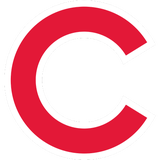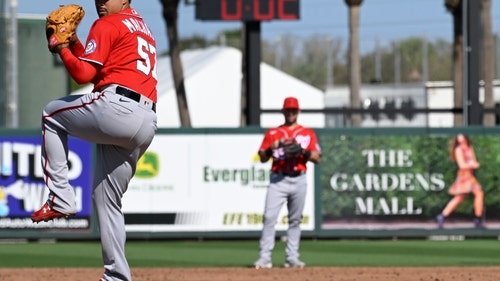
When it comes to lineup construction, managers know best

Lineup creation has been a topic around baseball for as long as the sport has been around. But is there really an optimal way to construct a lineup? Is good lineup construction a myth? To find out, we must really dig in deep.
Joe from Trottersville calls in to the local AM sports radio station. He has all the answers, he knows how to fix the team, and he has possibly been drinking. Most importantly, he knows how to jump start this worthless, piece of trash lineup. He knows all about lineup construction, and has all the answers.
Many fans believe that they have the answers to all of their team’s problems. If you ask everyday Joe, the answer is simple and the manager is a buffoon for not seeing it thus far. Oftentimes these issues center on the construction of a team’s lineup and the placement of the hitters within it. Fans raise an eyebrow when the leadoff hitter is an aging 37-year-old. They curse the manager for penciling in a .248 hitter in the two-hole. Frustration builds when the three and four hitters seemingly cannot drive in runs.
Obviously, the manager hasn’t a clue on how to obtain that one, perfect lineup card.
Thumbing through the lineups of the six division leaders in Major League Baseball reveals a number of similarities. It also does the opposite. Some lineups are traditional, while others are unorthodox. Despite this, they all share common success in 2016.
For years, it seemed to be universal knowledge that certain types of players only hit in certain spots in the lineup. Your team’s fastest player hit leadoff, where he then proceeded to steal bases. So, why have the Dodgers hit Chase Utley at the top of the order 107 times despite him having only two stolen bases on the year?
The two-hole was occupied by the team’s best bat-on-ball hitter, responsible for proper bunting technique and well-placed contact. So, why have the Cubs hit MVP candidate Kris Bryant second more than anyone else on the team? Why have the Dodgers done the same with Rookie of the Year candidate Corey Seager?
Similar standards existed for nearly all nine spots in the order. The cleanup man possessed the most power. The pitcher hit at the bottom of the line. The team’s most well-rounded batter hit in the three hole. For many years, team lineups were largely constructed following this traditional model. Now, it appears that the model can be modified.
The Boston Red Sox lead the league in nearly every offensive category. They have also had the luxury of hitting Mookie Betts, the only player in the league with at least 30 home runs and 20 stolen bases, at the top of their lineup for 109 games. The Nationals regularly hit rookie Trea Turner at the top of their order, a .342 hitter with 27 stolen bases.
More from Statliners
Contrast the Red Sox and Nationals with the Cleveland Indians. Designated hitter Carlos Santana has logged 80 games in the top spot, the most on the team. Santana is only hitting .251 and has stolen only five bases on the year.
Alongside superstars Bryant and Seager in the two spot is Nationals bearded man Jayson Werth. Bryant and Seager have the second and third highest WAR in the league respectively. Werth has a WAR of 1.2, good for 124th.
The Cubs send all-arounder Anthony Rizzo to the plate as the three man more than any other hitter on the team. The Nationals do the same with star Daniel Murphy. Both men rank in the top ten in both weighted runs created plus, or wRC+, and in weighted on base average, or wOBA. The Indians have hit shortstop Francisco Lindor in the three spot in 144 games out of a possible 151. Lindor ranks 77th in the league in both wRC+ and wOBA.
The cleanup men in the four spot are led by the big bats of Boston DH David Ortiz, Rangers third baseman Adrian Beltre, and Indians first baseman Mike Napoli, all in the top ten in the American League in RBI. Dodgers first baseman Adrian Gonzalez has hit cleanup over 100 times in 2016 and barely cracks the top 20 in RBI in the National League. Cubs second baseman Ben Zobrist is only slugging .374 in the cleanup spot since regularly moving there in late July.
Want your voice heard? Join the Statliners team!
The comparisons and differences continue on down the lineup from spots five through nine. Each lineup features a number of odd placements and yet, all six of these teams theoretically have a playoff spot already sewn up. Five of them rank in the top six in the league in team offensive WAR, the Rangers checking in at 12th.
While only hitting .251, Carlos Santana is third in the AL in walks. He may only have five stolen bases on the year, but Santana contributes to the team with sound discipline, only swinging at pitches outside of the zone 19.8 percent of the time, best in the AL.
Jayson Werth only swings at pitches in the zone an astounding 54.5 percent of the time, fifth lowest of any qualified hitter. Werth also possesses an impressive .419 on base percentage when hitting in the first inning and sees 4.6 pitches per plate appearance, the highest number in the league.
Out-of-place three hitter Francisco Lindor ranks 8th in the American League in WAR. The non-power threats of Zobrist and Gonzalez deliver high walk rates and high line drive percentages.
Perhaps each of these hitters are in their spots for a reason?
So do we hit the speedster up top or pencil in the on-base bat? Do we get our stud as many at-bats as possible or put the patient veteran in the two? So on, and so on. Perhaps the traditional model is being thrown out of the window for, well, whatever your manager would like. In today’s game, the only constant among these six teams is that their key hitters produce for their team’s needs.
So Joe, hang up the phone. Chances are, your manager knows exactly where each player should be hitting.
This article originally appeared on





